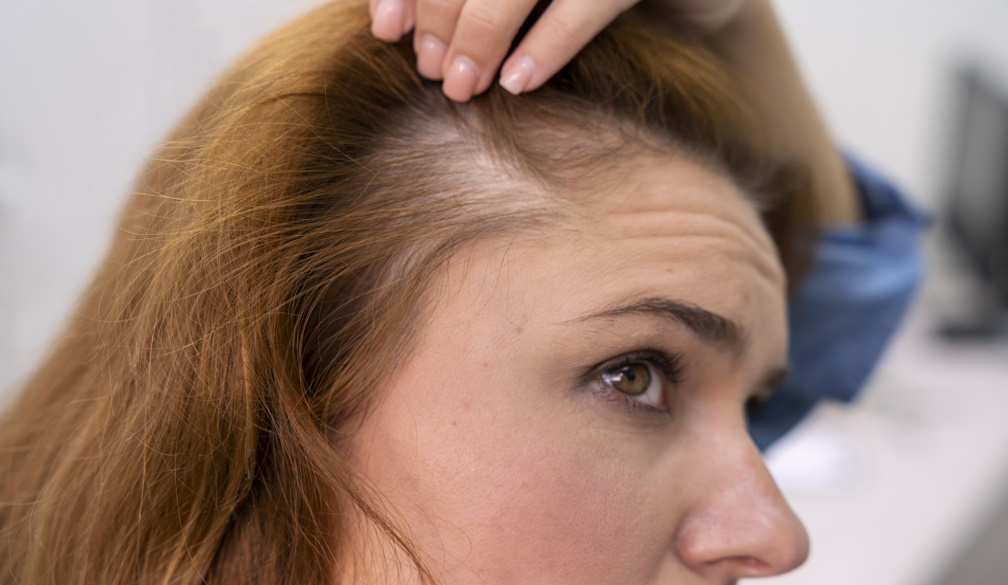Why the Scalp, Ears, and Hands Are the Most Overlooked Regions for Skin Cancer Checks

When we think about sun safety, our faces, arms, and shoulders often get the most attention. Yet, there are three areas that are consistently overlooked during both self-checks and professional screenings: the scalp, ears, and hands.
These regions are just as exposed to harmful ultraviolet (UV) rays as more visible parts of the body, but they are frequently left unprotected and unchecked—leading to higher risks of undetected skin cancer. Here’s why they deserve more attention, and how you can protect them.
1. The Scalp: Hidden but High-Risk
Most people assume their hair shields their scalp from the sun, but UV rays can easily reach this area—especially through partings or thinning hair. Because it’s hard to see, skin cancer on the scalp is often diagnosed later, making it more dangerous.
- Hair Isn’t Full Protection
Even thick hair doesn’t block all UV rays. People with short hair, bald spots, or light hair are especially at risk for sunburn and long-term damage. - Why Detection Is Delayed
Lesions on the scalp are easy to miss without regular checks, especially if they are hidden under hair. This delay can lead to skin cancers progressing further before treatment begins. - Signs You Shouldn’t Ignore
Persistent sores, scaly patches, or unusual moles on the scalp need professional evaluation. Early treatment greatly improves outcomes. - Best Ways to Protect the Scalp
A wide-brimmed hat offers better coverage than a cap. Scalp-specific sunscreen sprays can protect areas where hair coverage is thin.
For more information on symptoms, prevention, and treatment, see this comprehensive guide to skin cancer on the scalp.
2. The Ears: Unprotected by Default
Ears catch sunlight from multiple angles, making them one of the most sun-exposed areas on the body. Despite this, they are often overlooked in daily sunscreen routines.
- Vulnerable from All Sides
The tops, backs, and inner rims of the ears receive direct and reflected UV rays. Without protection, they are highly prone to basal cell and squamous cell carcinoma. - The Men’s Haircut Factor
Short hairstyles leave ears fully exposed year-round. This is a key reason why men have higher rates of ear-related skin cancers. - Sunscreen Application Gaps
Many people stop at the cheeks when applying sunscreen, forgetting the ears entirely. Even when applied, sunscreen often wears off quickly from friction or sweat. - Simple Protective Habits
Opt for wide-brimmed hats or hats with side flaps for added coverage. Always reapply sunscreen to the ears every two hours when outdoors.
3. The Hands: A Lifetime of Sun Exposure
Hands are exposed to sunlight almost every day of our lives. Despite this, they’re rarely included in our sun protection habits.
- Constant Exposure in Daily Life
From driving to gardening, hands absorb more UV exposure than many other parts of the body. This leads to cumulative sun damage over decades. - Overlooked in Sunscreen Use
Even diligent sunscreen users often forget the backs of their hands. Regular handwashing can remove sunscreen, leaving skin unprotected. - Visible Signs of Damage
Freckles, age spots, and persistent rough patches on the hands can be early warning signs of skin damage—or even skin cancer. - Protection Made Easy
Use SPF-infused hand creams as part of your daily routine. Reapply sunscreen after washing your hands or after prolonged sun exposure.
How to Check These Areas Effectively
- Scalp: Use a comb and mirror, or ask someone to help check for any unusual spots
- Ears: Use a hand mirror to see the backs and tops of your ears.
- Hands: Examine the backs, palms, and between the fingers for any changes in skin texture or colour.
The Bottom Line
The scalp, ears, and hands are often the forgotten frontlines in the fight against skin cancer. They’re exposed daily to UV rays but are rarely protected or checked as diligently as other body parts.
By adding them to your regular sunscreen routine, wearing protective clothing, and booking annual professional skin checks, you can greatly reduce your risk. Remember—skin cancer prevention isn’t about fear, it’s about awareness and early action.





